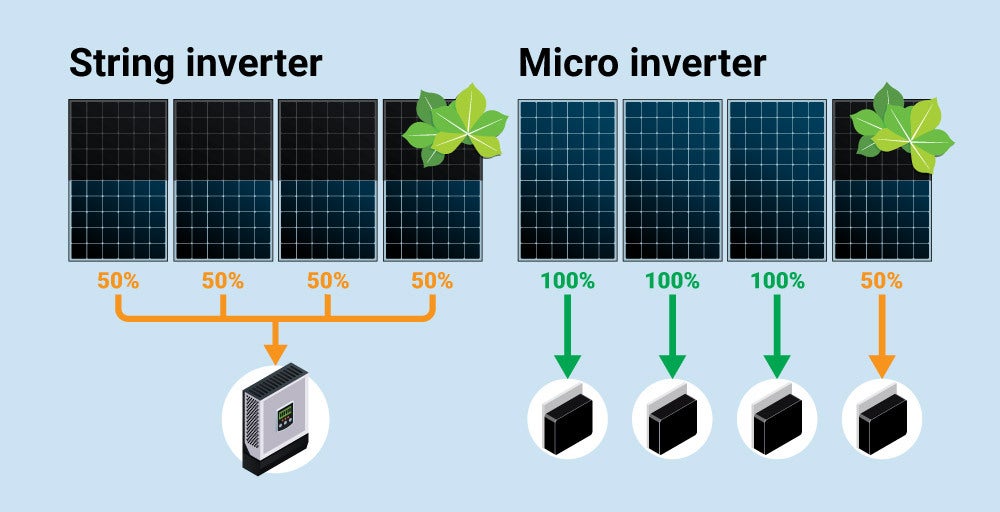Microinverters Impact on Solar Energy
Once upon a time solar panels across America were producing direct current electricity, just like in your batteries. For that electricity to be used with residential appliances or to connect to the grid, that electricity had to be converted to Alternating Current (AC) using inverters. Today Microinverters are replacing other inverter options.
From String Inverters to Microinverters
Even perfectly produced solar panels, when exactly aligned don’t produce equal amounts of power. Some leaves, twigs, snow or shadows can block some of the production of one or more panels in an array of panels. Where the modules are blocked by debris or shadow, there will be less electricity produced. This is where inverter differences make a big difference.

Solar modules are wired together. The current travels through the series of panels and is fed to a single inverter. Solar energy output in this configuration is based on the performance of the poorest panel performance. They are group set is still producing electricity, but far less than it could produce.
Then there is the microinverter. Simply put, a microinverter is a miniature inverter, downsized for individual solar panels rather than a string of solar panels.
Microinverters from Renewable Solar Resources capture all available electricity from each individual solar panel. Each panel has a separate microinverter connected to and capturing the current from it. That electricity is immediately converted to AC and routed to the breaker box and electric grid. Even if one or more of your panels has shade or blockage issues, your total output is stronger. It is much more efficient than it would be on a single string inverter.
Are Microinverters a good Value?
Benefits
Most solar panels are rated for 25 years. It is significant that microinverters have a 25-year warranty too. The inverter is one of the most expensive parts of your solar power system. Having a warranty that lasts as long as your panels makes a difference. String and hybrid inverters have shorter warranties – only 8 to 12 years.
Labor hours factor into your solar installation costs, so easy to install components can lower those costs.
Because microinverters are connected to each panel in your Solar Panel System, you can monitor individual performance and identify issues. If you are enjoying a bright sunny day but your panels are under producing you will get a notification that your panels output is not in the normal range. You can check for possible issues like debris or damage that could be impacting the performance of your solar panel array.
And of course, you are going to love the optimal performance you will get even if some of your solar panels are shaded during certain periods of the day. This is especially beneficial on complex roof types with several angels that change sun exposure. Microinverters route maximum AC to your breaker/fuse box and electric grid.
System expansion became a lot less complicated. Because your panels are independently converting to AC, your system doesn’t have to be paired to the central inverter. if you want to add more panels down the road, you can have those panels spliced in.
Drawbacks
The main drawback is the cost of the microinverters themselves. This isn’t the first go round for this technology. In the late 1990’s pricing and unreliability made Microinverters an unrealistic solution. While the reliability issue has been addressed, microinverters do still cost more than other inverters. Additionally, an upgrade may be required to get single panel level monitoring.
Another drawback is that microinverters don’t make sense when the solar panel array will be connected to a solar battery storage unit. Solar panels are usually coupled to the battery since batteries and solar panels both operate in DC. There is no sense to convert to AC only to convert back to DC.
Bottom line
Microinverters provide an innovative, elegant optimization of solar energy output, and instantly convert that energy to AC electricity. In instances where the roof space is limited or complicated, or you have shading during certain periods of the day, the microinverter is an enticing option to discuss with your solar installer.
